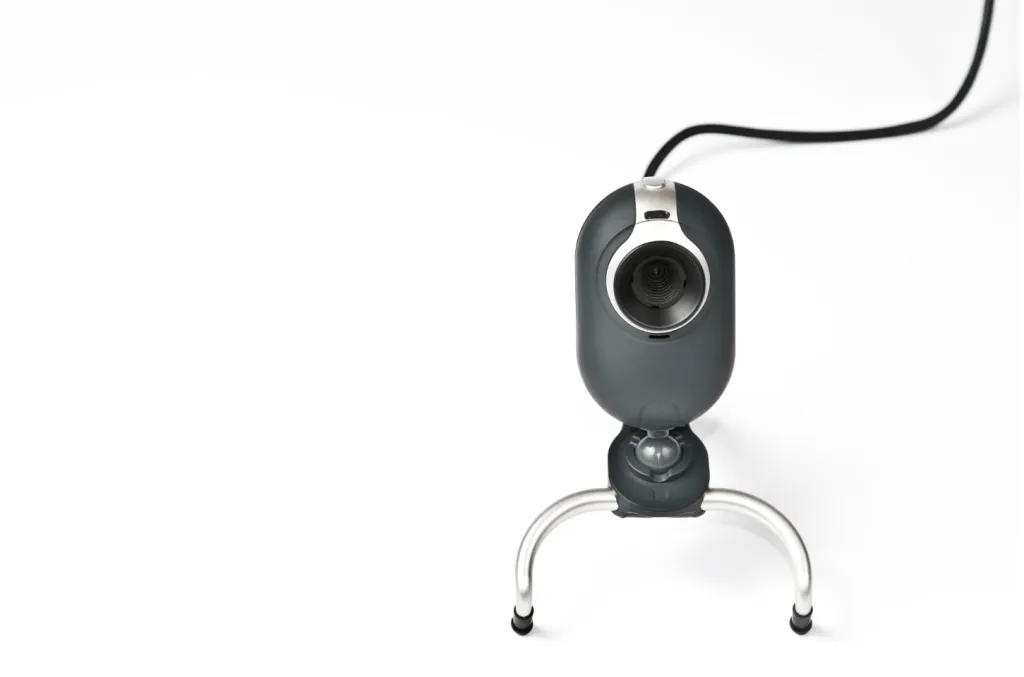This beginner-friendly guide explains webcam essentials in simple terms. Learn how resolution, frame rate, and microphone quality impact your video calls and streams. We compare price ranges and reveal which features matter most, with market data showing surging demand. Practical tips help you avoid overpaying while getting great performance. Whether for work, school, or streaming, discover how to choose the right webcam without tech jargon. Includes real-world examples and answers to common questions about setup and compatibility.
Introduction: Why Webcams Matter in Today's Digital World
In an era where video calls have become as common as phone calls, having a decent webcam is no longer optional—it's essential. Whether you're attending virtual meetings, taking online classes, streaming gameplay, or catching up with family, your built-in laptop camera often falls short in quality.
A 2023 survey by Owl Labs found that 87% of remote workers believe video quality impacts how they're perceived professionally. Meanwhile, the global webcam market has grown from $6.7 billion in 2020 to over $11 billion in 2023, with budget models driving most sales.
Understanding Webcam Basics

Resolution: More Than Just Numbers
When shopping for webcams, you'll encounter terms like:
- 720p (HD): The bare minimum today (1280×720 pixels)
- 1080p (Full HD): Standard for clear video (1920×1080 pixels)
- 4K: Ultra-sharp but often overkill for most users
Interesting Fact: According to Zoom's internal testing, 78% of users can't tell the difference between 720p and 1080p in typical video calls due to compression.
Frame Rate: Why Smoothness Matters
- 30fps: Standard for most budget webcams
- 60fps: Noticeably smoother, better for fast movement
- 90fps+: Mainly for professional streaming
Twitch's official guidelines recommend 60fps for optimal streaming quality.
The Price Spectrum: What You Get at Different Budgets
| Category | Price Range | Best For | Compromise |
| Budget | $20-$50 | Students, casual users | Basic features |
| Mid-Range | $50-$150 | Professionals, streamers | No 4K or advanced AI |
| Premium | $150+ | Content creators | Expensive for most users |
Market Insight: The NPD Group reported a 179% surge in webcam demand during 2020, with prices stabilizing as supply caught up.
Features That Actually Matter (And Those That Don't)
Important Features:
- Autofocus: Keeps you sharp if you move around
- Low-Light Performance: Crucial for home offices
- Field of View: 78°-90° is ideal for most users
- Microphone Quality: RTINGS.com tests show even budget webcams now include decent noise reduction
Overrated Features:
- 4K Resolution: Most apps compress video anyway
- HDR: Nice but not essential
- Extreme High FPS: Unnecessary unless you're a pro streamer
A Real-World Example: Nearstream VM20
To illustrate how these technical specifications translate to real-world use, let's examine a popular budget option that embodies many ideal features - the Nearstream VM20. This model serves as an excellent example of how modern affordable webcams can deliver quality performance.

Key Features:
- 1080p at 60fps - Demonstrates the current sweet spot for resolution and frame rate
- 90° field of view - Shows the wider angle becoming standard in newer models
- Plug-and-play setup - Represents the improved user-friendliness in today's webcams
- Noise-reducing mics - Illustrates how even budget models now include audio enhancements
Why It's Notable:
The VM20's specifications reflect how quickly webcam technology has advanced. Just three years ago, these features would have been found only in premium models. This case study helps consumers understand what to expect from modern budget options.
Practical Webcam FAQ
How much should I spend on my first webcam?
For your first webcam, $40-$80 offers great quality for most needs. Professionals may require $150+ models, but beginners can find excellent options in the mid-range. Focus on 1080p resolution and good low-light performance.
Is 4K worth it for video calls?
4K webcams are overkill for video calls—platforms like Zoom and Teams compress to 1080p or lower. Unless you record high-res content, a good 1080p camera is sufficient. Save money and bandwidth with HD instead.
Can I use my smartphone as a webcam?
Yes, you can use your smartphone as a webcam, but a dedicated webcam provides better stability, autofocus, and built-in microphones. Apps like DroidCam work, but for frequent use, a real webcam is more reliable.
What's more important—resolution or frame rate?
For video calls, prioritize resolution (1080p) for clarity. For streaming or gaming, aim for 60fps for smoother motion. Balance both based on your needs—calls favor sharpness, while action benefits from higher frame rates.
How long do webcams typically last?
A quality webcam typically lasts 3–5 years with regular use. The USB port or cable often fails first. Proper handling and avoiding frequent unplugging can extend its lifespan. Higher-end models may outlast budget options.
The Future of Webcam Technology
 Emerging trends to watch:
Emerging trends to watch:
- AI-powered features: Automatic framing and virtual backgrounds
- Better low-light sensors: Improving performance in dim environments
- USB-C adoption: As reported by USB-IF, this is becoming standard
MIT Technology Review predicts "smart webcams" that auto-adjust settings may become common within 5 years.
Final Thoughts
Choosing a webcam doesn't need to be complicated. Remember:
- 1080p at 60fps is the sweet spot
- Good lighting matters more than expensive gear
- Your specific needs should guide your purchase
The best webcam isn't the most expensive one—it's the one that fits your actual usage.
Want to learn more? Check manufacturer specs and professional reviews before buying.



























































